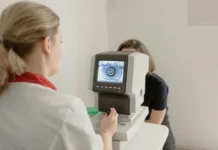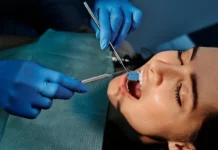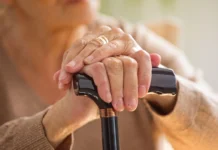Mood disorders, such as major depressive disorder, persistent depressive disorder, bipolar disorder, and seasonal affective disorder (SAD), can profoundly affect daily functioning, relationships, and overall quality of life. Conventional treatments, including antidepressants (for example, SSRIs, SNRIs), mood stabilizers, and psychotherapy (like cognitive-behavioral therapy), offer relief for many. However, some individuals still struggle despite these standard approaches or experience side effects that limit their usefulness.
This blog explores alternative treatment for depression options that extend beyond typical paradigms, offering hope and support for those seeking different paths.
1. Nutritional and Lifestyle Interventions
Diet and Nutrient Support
Dietary patterns can significantly influence mental health. A Mediterranean-style diet rich in fruits, vegetables, whole grains, lean protein, nuts, and olive oil supports brain function and mood balance. Additionally, targeted nutrients like omega-3 fatty acids (found in fatty fish or supplements), vitamin D, magnesium, and zinc have been linked to mood improvement.
Gut-Brain Health
The gut microbiome plays a vital role in neurotransmitter production and mental health. Probiotics and prebiotic-rich foods, such as yogurt, kefir, sauerkraut, and legumes, may enhance gut health and alleviate depressive symptoms through the gut-brain axis.
Sleep and Physical Activity
Quality sleep and regular exercise are powerful mood modulators. Adequate rest and activities like brisk walking, swimming, or yoga can boost neurotransmitters like serotonin and endorphins while reducing stress.
2. Mind-Body Therapies
Meditation and Mindfulness
Mindfulness meditation, particularly mindfulness-based cognitive therapy (MBCT), is well-documented for preventing depressive relapse. Regular mindfulness practice helps individuals detach from negative thought patterns and cultivate inner resilience.
Yoga and Tai Chi
These practices combine gentle exercise, breath control, and meditation. Studies show they can reduce stress, anxiety, and depressive symptoms by promoting physical relaxation and mental clarity.
Breathwork and Relaxation Techniques
Techniques like progressive muscle relaxation, guided imagery, and diaphragmatic breathing help activate the parasympathetic nervous system, inducing a calming effect and reducing stress hormones.
3. Creative and Expressive Therapies
Art Therapy and Music Therapy
Therapeutic creative expression allows individuals to explore emotions nonverbally. Art therapy helps process trauma and internal stress, while music therapy can shift mood through rhythm, melody and shared musical experiences.
Writing and Journaling
Reflective writing, such as gratitude journals, morning pages, or mood diaries, supports emotional processing, mood regulation, and recognition of negative thought patterns.
4. Transcranial and Neuromodulation Techniques
Transcranial Magnetic Stimulation (TMS)
TMS uses magnetic pulses to stimulate nerve cells in mood-related brain areas. It is FDA-approved for treatment-resistant depression and has fewer side effects than systemic medications.
Transcranial Direct Current Stimulation (tDCS)
This non-invasive intervention delivers mild electrical stimulation to targeted brain regions. Research shows tDCS may improve mood and cognitive function, although it is still emerging.
Cranial Electrotherapy Stimulation (CES)
CES uses a low-level electrical current delivered to the brain via ear-clip electrodes. Some studies suggest benefits for depression, anxiety, and insomnia, but clinical consensus is still evolving.
5. Herbal and Nutraceutical Approaches
Standardized Herbal Remedies
Herbs such as St. John’s wort, saffron, and Rhodiola rosea have demonstrated antidepressant effects in clinical trials. These should be used cautiously under professional supervision, particularly due to potential drug interactions.
Standardized Nutraceutical Combinations
Products containing 5-HTP, SAM-e, L-theanine, and inositol may support mood by modulating neurotransmitter levels. Quality control and physician guidance are essential.
6. Emerging Somatic and Environmental Therapies
Floatation Therapy and Sensory Deprivation
Float tanks minimize sensory input, promoting deep physical and mental relaxation. Users frequently report reduced anxiety and enhanced clarity post-session.
Forest Bathing (Shinrin-Yoku)
Forest bathing involves immersive time in nature, associated with lower stress hormones and improved mood. Spending time among trees and greenery enhances emotional wellness and cognitive restoration.
Light Therapy
Especially effective for SAD, light therapy uses bright artificial light to regulate circadian rhythms and enhance mood. Dawn simulators can also benefit non-seasonal depression and sleep issues.
7. Digital and Peer-Supported Interventions
Guided Digital Programs
Evidence-based digital platforms offer interactive CBT, mindfulness modules, and mood-tracking tools. Some also connect users with virtual coaches or support communities, increasing treatment accessibility.
Peer-Led and Community Support
Peer groups, whether in person or online, provide validation and shared coping strategies. Feeling understood by others with lived experience fosters hope and reduces isolation.
8. Integrative & Professional Guidance
For those interested in combining conventional and non-traditional approaches, consulting qualified integrative mental health practitioners can ensure safe, personalized plans. A well-rounded integrative strategy might include medication management, psychotherapy, nutrition, movement practices, and neuromodulation.
If you’re exploring holistic healing methods, the approach listed in this alternative treatment for depression overview could be a valuable direction.
Key Takeaways
- No one-size-fits-all solution: Mental health care is deeply personal. What resonates for one person may not work for another.
- Evidence supports many alternatives: Several non-conventional treatments, from lifestyle shifts and creative therapies to neuromodulation and digital programs, show promising results.
- Work with professionals: Always inform your healthcare provider about any complementary or alternative approaches to ensure safety, avoid interactions, and create a cohesive care plan.
By venturing beyond conventional methods with an openness to lifestyle, mind-body, somatic, and digital interventions, those struggling with mood disorders can discover novel tools and pathways to well-being. If you’re considering these options, consult knowledgeable practitioners and proceed thoughtfully.
Last Updated on 6 months ago by George Morgan

































